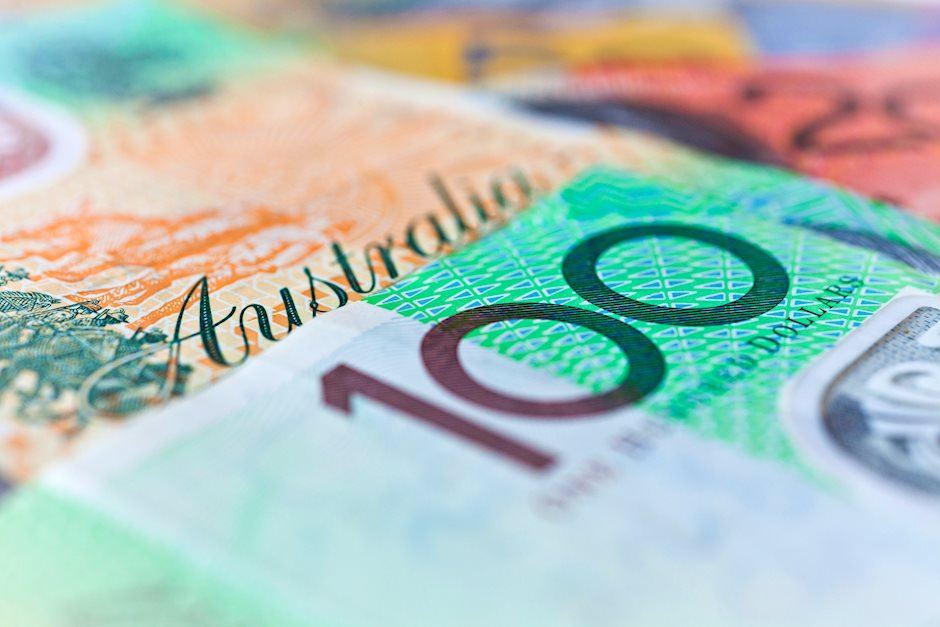Australian Dollar solid on RBA's hawkish stance, eyes on mid-tier data
- AUD/USD registered a boost, settling near 0.6600.
- RBA maintains its hawkish position, undergirding a strengthened AUD.
- Investors to eye upcoming mid-tier Australian economic figures during the Asian session.

The AUD/USD pair experienced an increase of 0.40% during Monday's session, settling near 0.6600. Undoubtedly, the Reserve Bank of Australia's (RBA) unwavering hawkish stance and stronger Chinese inflation figures reported last week provide a supportive platform for the Aussie, although escalating geopolitical tensions in the Middle East might limit its upside.
Considering the mixed Australian economic outlook and high inflation, the RBA has all the reasons to remain hawkish, which might continue benefiting the Aussie.
Daily digest market movers: Aussie up after RBA’s hawkish directions last week, eyes on data later in Asian session
- The Reserve Bank of Australia held its rates steady at 4.35% for a sixth consecutive session last week, noting that "the board is not dismissing any possibilities."
- The Bank underlined the significance of remaining vigilant toward potential inflation threats, implying a reluctance for hasty policy changes.
- Meanwhile, Westpac analysts have shifted their forecast for the first rate cut from November 2024 to February 2025. Hence, the RBA's hawkish posture is likely to bolster the AUD in the near term.
- Investors anticipate further clues from Chinese Retail Sales and Industrial Production figures coming Thursday. Additionally, Australian Wage data from Q2 and Westpac Confidence figures from July, to be released during the upcoming Asian session, will hold the market's attention.
AUD/USD technical outlook: Pair encounters significant resistance around 0.6600
The price action of AUD/USD over the past week reflects that the bulls are facing considerable resistance around the 0.6600 level. The Relative Strength Index (RSI) continues to hover around the neutral zone, while the Moving Average Convergence Divergence (MACD) points to a steady bullish traction. This points out that the recent bullish recovery is waiting for a fundamental catalyst to pierce through the 0.6600 level.
Central banks FAQs
Central Banks have a key mandate which is making sure that there is price stability in a country or region. Economies are constantly facing inflation or deflation when prices for certain goods and services are fluctuating. Constant rising prices for the same goods means inflation, constant lowered prices for the same goods means deflation. It is the task of the central bank to keep the demand in line by tweaking its policy rate. For the biggest central banks like the US Federal Reserve (Fed), the European Central Bank (ECB) or the Bank of England (BoE), the mandate is to keep inflation close to 2%.
A central bank has one important tool at its disposal to get inflation higher or lower, and that is by tweaking its benchmark policy rate, commonly known as interest rate. On pre-communicated moments, the central bank will issue a statement with its policy rate and provide additional reasoning on why it is either remaining or changing (cutting or hiking) it. Local banks will adjust their savings and lending rates accordingly, which in turn will make it either harder or easier for people to earn on their savings or for companies to take out loans and make investments in their businesses. When the central bank hikes interest rates substantially, this is called monetary tightening. When it is cutting its benchmark rate, it is called monetary easing.
A central bank is often politically independent. Members of the central bank policy board are passing through a series of panels and hearings before being appointed to a policy board seat. Each member in that board often has a certain conviction on how the central bank should control inflation and the subsequent monetary policy. Members that want a very loose monetary policy, with low rates and cheap lending, to boost the economy substantially while being content to see inflation slightly above 2%, are called ‘doves’. Members that rather want to see higher rates to reward savings and want to keep a lit on inflation at all time are called ‘hawks’ and will not rest until inflation is at or just below 2%.
Normally, there is a chairman or president who leads each meeting, needs to create a consensus between the hawks or doves and has his or her final say when it would come down to a vote split to avoid a 50-50 tie on whether the current policy should be adjusted. The chairman will deliver speeches which often can be followed live, where the current monetary stance and outlook is being communicated. A central bank will try to push forward its monetary policy without triggering violent swings in rates, equities, or its currency. All members of the central bank will channel their stance toward the markets in advance of a policy meeting event. A few days before a policy meeting takes place until the new policy has been communicated, members are forbidden to talk publicly. This is called the blackout period.
Author

Patricio Martín
FXStreet
Patricio is an economist from Argentina passionate about global finance and understanding the daily movements of the markets.

















